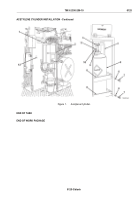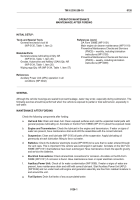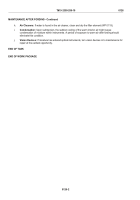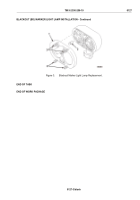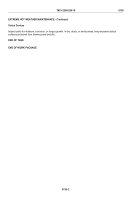TM-9-2350-256-10 - Page 721 of 796
OPERATOR MAINTENANCE
EXTREME COLD WEATHER MAINTENANCE
INITIAL SETUP:
Personnel Required
Crewman (3)
References
Chocking vehicle (WP 0103)
DA Form 5988-E (WP 0131)
References (cont.)
FM 3-22.65 (WP 0131)
Lubrication instructions (WP 0101)
TM 4-33.31 (WP 0131)
TM 9-1005-213-10 (WP 0131)
TM 43-0139 (WP 0131)
EXTREME COLD WEATHER MAINTENANCE
NOTE
Perform frequent inspections of inactive vehicles to ensure proper operation and function.
1.
Special care in cleaning and lubricating the vehicle must be taken where extremes in temperature, humidity,
and terrain conditions exist. Good care of vehicle ensures proper operation and function. It also guards
against excessive wear of the working parts and deterioration of the materiel. Approved storage and
handling instructions for lubricants and fuels should be followed. Refer to Lubrication Instructions
(WP 0101). These services should be done often during extremely cold weather operation conditions.
2.
Refer to Lubrication Instructions (WP 0101). These services should be done often during extremely cold or
hot weather operation, prolonged travel periods, fording, continued exposure to wet or salty air, operation in
sand, dust, mud or for short start-and-stop operation periods. Any of these conditions may reduce the
effectiveness of lubricants.
3.
When repeated failure of material results from exposure to extreme conditions, report problem on
DA Form 5988-E (WP 0131) and notify maintenance.
4.
Check the following components:
a.
Batteries:
Extreme cold causes batteries to freeze and prevents them from furnishing enough power
for engine starts. TM 4.33-31 (WP 0131), gives information about the effects of cold weather on
batteries. Have maintenance remove batteries from vehicle and store them in a warm place whenever
the vehicle is not used for long periods.
b.
Tracks and Suspension:
Park the vehicle on plants or brush to prevent tracks from freezing to
ground. Chock (WP 0103) if necessary. Clean mud, snow, and ice from tracks and suspension as
soon as possible. Refer to TM 4-33.31 (WP 0131) for the effects of cold weather on the tracks and
suspension.
c.
Canvas Covers and Tarpaulins:
Canvas covers and tarpaulins are hard to use in cold weather.
Whenever possible, tarpaulins should be warmed and unfolded in heated areas. Clean the vehicle of
snow, ice, and mud before covering. Cover and shield the vehicle, but keep ends of cover off the
ground to prevent them from freezing. Always cover the rear deck of vehicle to keep snow out of the
engine compartment.
d.
Metal Parts:
Metal parts become more brittle and cannot take shock loads at arctic temperatures.
Make frequent inspections of metal areas. Remove corrosion from exterior metal surfaces with
abrasive paper or cloth and apply a protective coating of paint, oil, or suitable rust preventative
(TM 43-0139 (WP 0131)).
TM 9-2350-256-10
0129
0129-1
Back to Top

